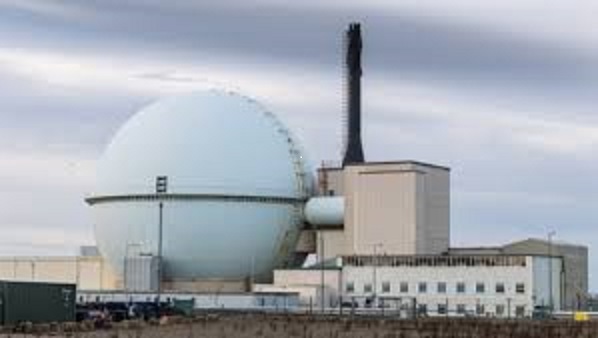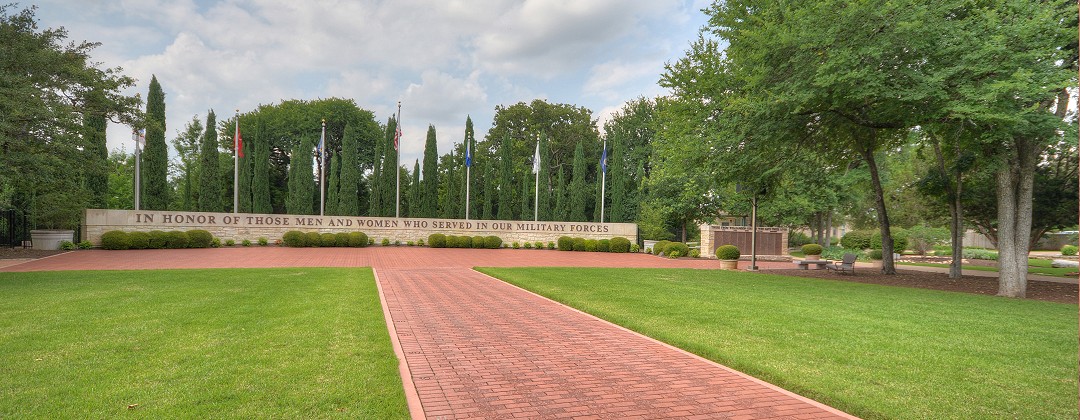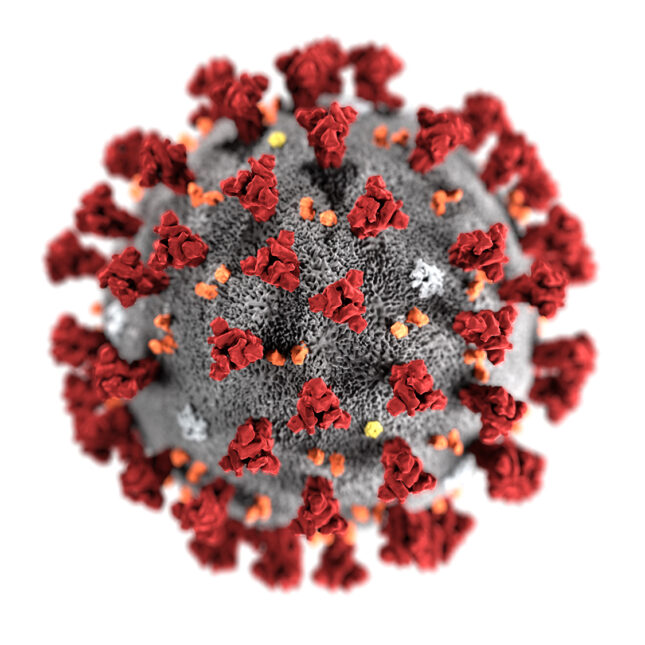The last place I lived in the UK before coming to the US was a small village in the west of England. The village was distinguished by its great country pub, its history that went all the way back two thousand years to Roman times, and by its close proximity to a nuclear power station. Our cottage sat on the outskirts of the village with a clear view of the power station about two miles across farmer’s fields. On cool, calm nights I could hear the power station’s PA announcements in the faint distance.
I never considered it to be dangerous to live there although many others at that time were demonstrating against nuclear power with the expectation that these stations would explode like an atomic bomb. There was a heated political debate going on in the UK at that time about continuing with nuclear power. In the pub one night I asked one of my neighbors about his opinion on this topic. He was set against nuclear because of its perceived dangers. I pointed out that although I considered the dangers to be low they were at least democratically shared amongst all the consumers of the power generated. I continued by comparing this to the use of coal power which in the UK at that time in an average year killed about 50 miners and retired about 3000 with health issues, mainly lung disease. My neighbor replied that since he wasn’t likely to become a coal miner he much preferred coal power to nuclear where he did share a risk. As someone who comes from a coal mining ancestry I was not best pleased with his opinion, but I let it pass.
My only regular contact with the power station was the weekly servicing of a radiation monitor that was mounted on a power pole beside the road just over our garden hedge. Since I was working most days I didn’t see this happen very often. One day that I was at home they turned up as I was mowing the front yard. A small white van pulled up. The driver got out and removed an extendable ladder from a rack on the van roof. He placed the ladder up against the power pole and extended it up toward a small box attached to the pole. A young lady then emerged from the van. She was dressed in a white boiler suit and wore a white hardhat. Carrying a clipboard she climbed the ladder and unlocked the box. She then removed the radiation monitor and looked at it – then she screamed. The scene was like a cartoon. She seemed to descend the ladder without touching the steps and while turning around in midair with feet pounding. The clipboard and hardhat went one way as she ran up the road in the other direction, still screaming. My life passed in front of my eyes – were we all going to die of radiation poisoning?
As it turned out we were not in any danger. The lady returned when she calmed down, picked up her hardhat and clipboard, and climbed back up the ladder where she again read the display on the monitor. When she came back down she noticed me leaning on the handles of my lawnmower and staring at her in astonishment. She explained that she was terrified of spiders – arachnophobia – and had encountered a really large and hairy member of the species when she opened the box, thus explaining the histrionics. At this point she got back into the van, the driver collected the ladders and placed them back on the roof rack and the drove away. I believe my heart was still racing an hour or so later but I put it down to the yard work.
As I mentioned above, there was a vigorous debate about nuclear power going on in the UK at this time. The UK had experienced one of the worst nuclear accidents in 1957 at Windscale, Cumbria, when one of the reactors designed to produce plutonium and tritium caught fire and spewed radioactive contaminants into the atmosphere. This reactor design consisted of a large pile of graphite bricks with horizontal holes drilled through the pile. Fuel cartridges were pushed through the holes to become irradiated before falling out the far end into a water pond to cool. This whole arrangement was cooled by atmospheric air that got sucked in at one end and sucked out the other end by natural convection by being directed up a chimney and vented to the atmosphere.

If you imagine that this arrangement sounds dangerous, it is, but the government wanted the plutonium and tritium for the UK nuclear weapons program. When the fire occurred and vented the radioactive contents of the fuel bundles into the atmosphere, the UK government hushed it up lest public opinion endanger their nuclear weapon ambitions.
Since the inception of the idea of using nuclear reactors to generate electricity a number of reactor designs have been produced and distributed throughout the world. The Windscale experience led the UK to develop the Magnox Gas-Cooled Reactor design for use throughout Britain. This reactor is a graphite-moderated CO2 gas-cooled design.

This design is not only a reasonable one for producing electricity, it’s also a weapons-grade plutonium generator. The one next to my house was one of these reactors and holds the record as the longest serving nuclear reactor in the UK.
In the midst of the nuclear debate in the UK, our local power station decided to open its doors to the public to let them see the internal operation of the power station. It was to be open on a Saturday and Sunday to conduct guided parties of the public around the power station. I had to go see. There were hundreds of people there awaiting their tours but it was all well organized and I was quickly part of a group led by a power station worker in the dress uniform of white boiler suit and white hardhat.

There were two reactors in the power station, both constructed of prestressed, reinforced concrete. At the bottom of each reactor, there were a number of huge electric motors that drove the fans that circulated the carbon-dioxide gas to cool the core. As we followed our guide around the cylindrical concrete construction of the reactor we could feel the warmth from the walls, It was quite toasty in the reactor hall. We finally emerged out of a door into a large hallway that stretched for some distance. In one corner there was a large grey-green metal machine that looked like some kind of alien robot. A lady in our party approached our guide, pointed at the machine, and asked, ‘Is that the reactor?’ Our guide answered, ‘No, that’s the refueling machine.’ ‘Well, where is the reactor’ she asked. ‘You’re standing on it’ the guide replied. I think she must have jumped about a foot in the air before scuttling off through the door and down the stairs to safety. It was hilarious. I did wonder what she thought she had been looking at as we climbed the stairs around the concrete edifice. Despite this lady’s reaction, the weekend was a resounding success with thousands of visitors over the two days.
The nuclear reactors in use today for the generation of electrical power were designed during the era of the Cold War. These designs were substantially motivated by military objectives; either to produce fissile materials or to power warships. Efficient power generation was of course the main aim, but the military requirements did compromise their design. Perhaps the most hazardous design was that used in the Soviet Union, including the one in Chernobyl. It uses boiling water and a graphite moderator.

When the coolant level fell, the hot graphite was exposed and reacted with steam to produce a large bubble of hydrogen. When the hydrogen ignited it blew the top off the reactor as well as blowing out the bottom. The result was that the reactor core melted into a kind of lava and flowed out of the containment and into the basement. All of this was caused by a rushed safety test that was conducted by operators and managers who were being forced to meet an artificial schedule or suffer the wrath of the Party bosses.
In the case of the Fukushima meltdown, it was not a reactor design flaw that caused the accident, it was the installation of the auxiliary support systems that failed to take into account the extraordinary circumstances that befell the reactors. The Fukushima reactors were a boiling water design that during a shutdown required that the primary coolant be circulated through the core until its temperature fell to safe levels. The reactors had steam-driven pumps to circulate the coolant with electrically powered backups used as the core cooled and the steam pressure fell.

The electrically driven pumps could use the power being generated by one of the other reactors, assuming it too was not in shutdown. In addition, they could use power from a dedicated conventional power station located some distance away. As a final backup, they had an array of diesel generators located in the basement plus a host of batteries on the roof. On the fateful day of the earthquake, the tremor instigated an emergency shutdown of all of the reactors that were in operation at that time. It also disconnected the conventional power station from the grid. The diesel generators were enough to keep the coolant flowing for days until the tsunami topped the seawall and drowned them. Only the batteries were left and they ran down after a few hours. Eventually, the loss of coolant caused the core to be exposed and a hydrogen gas bubble exploded, destroying the containment and exposing the melting core to the environment.
In my opinion, this disaster was caused by a lack of imagination when they designed the backup generator installation. Had the generators been distributed around the site, high and low, and had the seawall been built to a height higher than twice the highest imaginable tsunami, and had the conventional power station been hardwired to the reactors, perhaps the disaster would not have happened. As it was pressure to do enough at an acceptable cost, and within a manageable timescale, resulted in a system that was vulnerable rather than robust, with all that it has entailed.
Until nuclear fusion becomes available to deliver unlimited energy with no radioactive hazard, fission reactors will be the cleanest and most reliable source of the power we need. However, I suggest that the new breed of nuclear reactors that are based on safety science rather than military necessity are the way forward.





 John Kerry is a particular case in point. Married to Teresa Heinz an heir to the Heinz fortune, Kerry has a published net worth of over $250 million and has managed to amass 6 houses, 12 cars, 2 yachts, and a private jet. I suspect that despite his privilege he will admonish us commoners to slash our carbon footprint lest we increase the global temperatures by 0.1C over the next half-century.
John Kerry is a particular case in point. Married to Teresa Heinz an heir to the Heinz fortune, Kerry has a published net worth of over $250 million and has managed to amass 6 houses, 12 cars, 2 yachts, and a private jet. I suspect that despite his privilege he will admonish us commoners to slash our carbon footprint lest we increase the global temperatures by 0.1C over the next half-century. usy trying to date that hot cheerleader in high school might notice that the planet’s temperature is currently well below the average over that period. Those who were in the high school smart clique, more interested in getting laid than getting an education, will be wondering what a chart is and what ‘average’ means.
usy trying to date that hot cheerleader in high school might notice that the planet’s temperature is currently well below the average over that period. Those who were in the high school smart clique, more interested in getting laid than getting an education, will be wondering what a chart is and what ‘average’ means. rt thingies. You may again note that today’s temperatures are about as low as they have ever been. It’s also the case that atmospheric CO2 is about as low as it’s ever been. Worse, the CO2 trace doesn’t seem to match the temperature trace very well at all. There are times when CO2 is high but global temperatures are low and times when CO2 is low and global temperatures are high. How can this be?
rt thingies. You may again note that today’s temperatures are about as low as they have ever been. It’s also the case that atmospheric CO2 is about as low as it’s ever been. Worse, the CO2 trace doesn’t seem to match the temperature trace very well at all. There are times when CO2 is high but global temperatures are low and times when CO2 is low and global temperatures are high. How can this be? When challenged they will claim that the computer models prove them correct.They remind me of the scene in the Hitchhiker’s Guide to the Galaxy when the Magratheans built the computer Deep Thought and challenged it to calculate the answer to the ultimate question of life, the universe, and everything. After 7.5 million Deep Thought responded with the answer; 42. I think that John Kerry is to be the head programmer and all the rest of the Biden team will be his acolytes and computer technicians.
When challenged they will claim that the computer models prove them correct.They remind me of the scene in the Hitchhiker’s Guide to the Galaxy when the Magratheans built the computer Deep Thought and challenged it to calculate the answer to the ultimate question of life, the universe, and everything. After 7.5 million Deep Thought responded with the answer; 42. I think that John Kerry is to be the head programmer and all the rest of the Biden team will be his acolytes and computer technicians.


 first feeling of dread came when I noticed that the road was not so much wet but riverine. I had not realized just how much rain was falling; it was a biblical deluge. The roads were flooded and depending on how they sloped, one side or the other might be a foot deep or more. In my little car with its low profile I was trying to negotiate around the deeper sections. Did I mention before that everything is bigger in Texas? Well, of particular note is the size of Texas vehicles; particularly pickups and SUVs. Since these are high off the ground and since their drivers like a challenge I was continually being passed by them in the other lane as they headed for the deeper spots to play in the rain and to create large waves that almost flooded my little car. The experience was verging on the terrifying but I pressed on since there was no good place to pull over and my wife’s reports told me that my alternate routes were impassable.
first feeling of dread came when I noticed that the road was not so much wet but riverine. I had not realized just how much rain was falling; it was a biblical deluge. The roads were flooded and depending on how they sloped, one side or the other might be a foot deep or more. In my little car with its low profile I was trying to negotiate around the deeper sections. Did I mention before that everything is bigger in Texas? Well, of particular note is the size of Texas vehicles; particularly pickups and SUVs. Since these are high off the ground and since their drivers like a challenge I was continually being passed by them in the other lane as they headed for the deeper spots to play in the rain and to create large waves that almost flooded my little car. The experience was verging on the terrifying but I pressed on since there was no good place to pull over and my wife’s reports told me that my alternate routes were impassable. Hanging from the helicopter there was a long white rope with someone dangling from the end. The helicopter was soon over me again, this time dipping the rescue swimmer into the torrent like bait on a fishing line. Within moments he joined me in the Miata. Although yelling in my ear I found it difficult to make out what he was saying. I finally figured that he was asking me what we were standing on, was there anybody else with me and were my legs free of the car. I answered him by sticking my head through the rescue strap, cinching up the slider and yelling that it was time to get the #### out of here. Off we went way high in the air and spinning all the way. I had my eyes closed for most of this trip since when I had opened them for a quick look I got suitably terrified.
Hanging from the helicopter there was a long white rope with someone dangling from the end. The helicopter was soon over me again, this time dipping the rescue swimmer into the torrent like bait on a fishing line. Within moments he joined me in the Miata. Although yelling in my ear I found it difficult to make out what he was saying. I finally figured that he was asking me what we were standing on, was there anybody else with me and were my legs free of the car. I answered him by sticking my head through the rescue strap, cinching up the slider and yelling that it was time to get the #### out of here. Off we went way high in the air and spinning all the way. I had my eyes closed for most of this trip since when I had opened them for a quick look I got suitably terrified.


